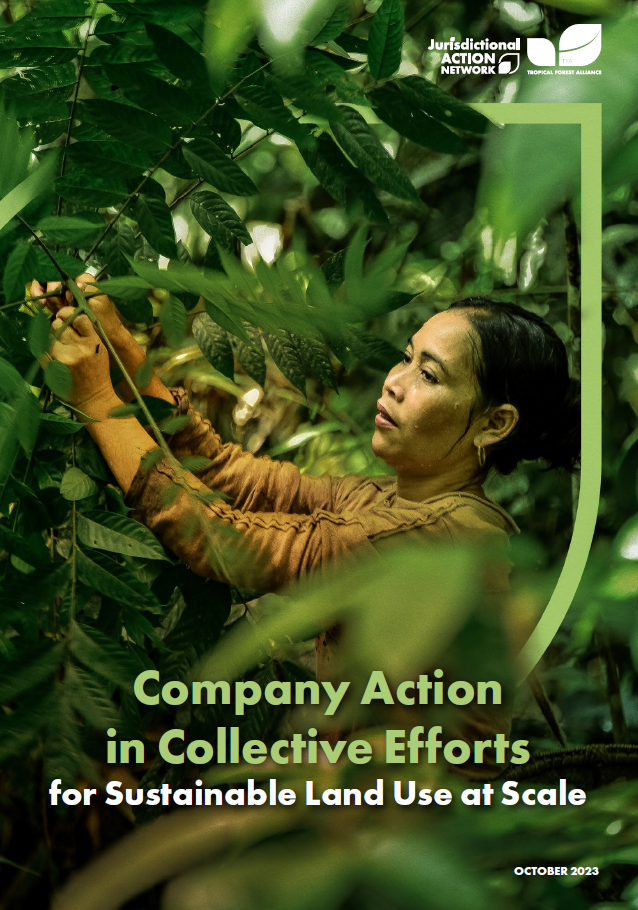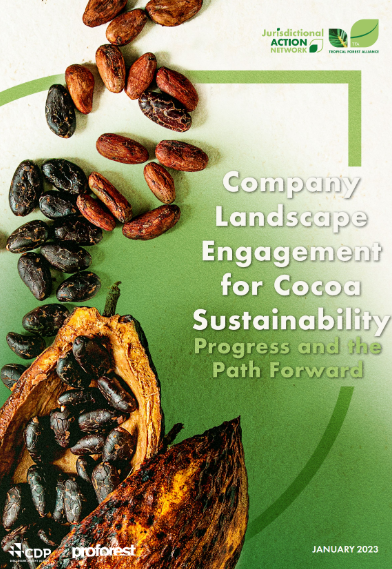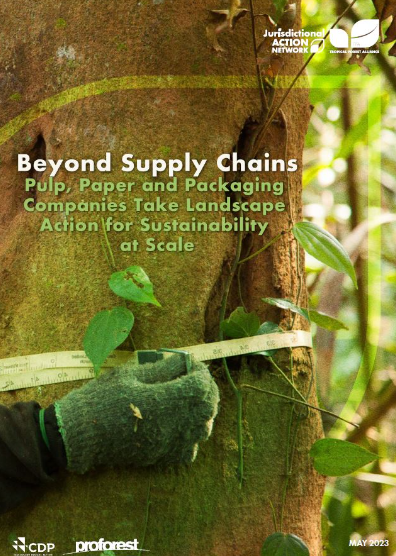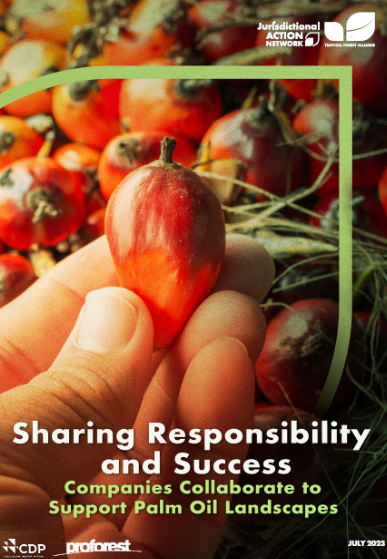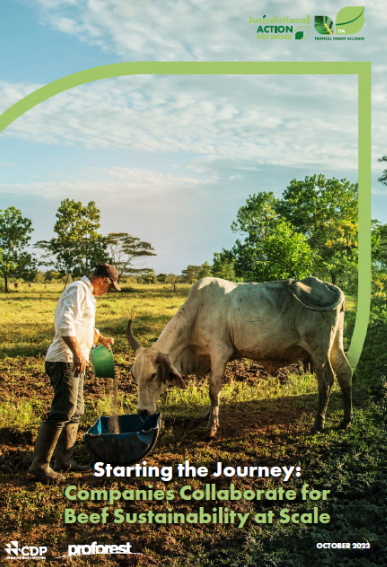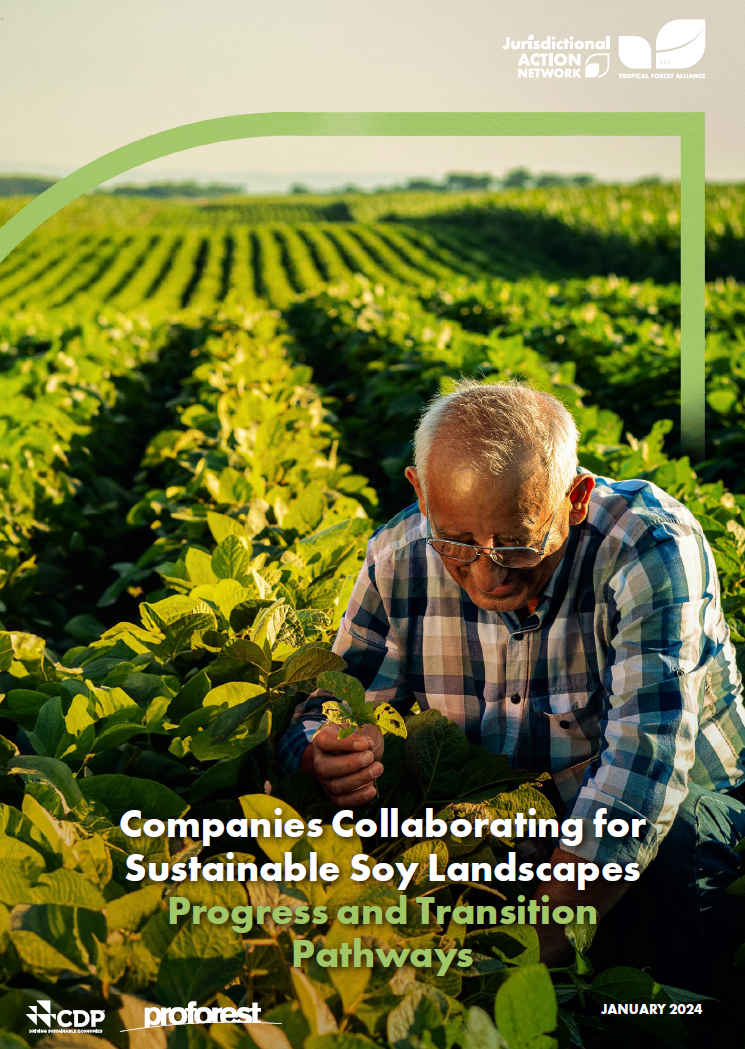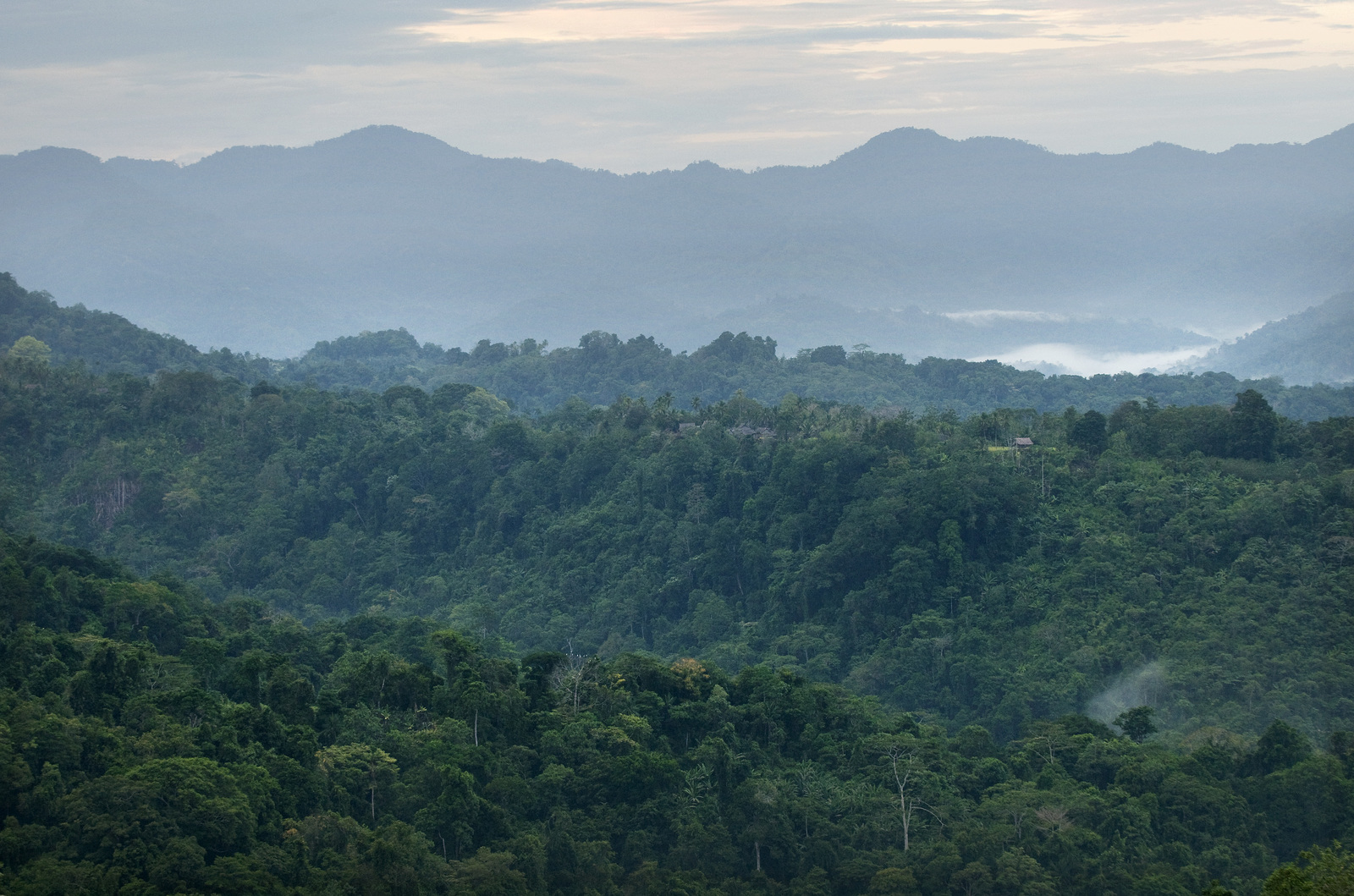
Contributing to Change at Scale: Company Action in Production Landscapes
Learn from a 15-month study initiated by the Tropical Forest Alliance (TFA) to advance understanding of why and how downstream and midstream companies collaborate with stakeholders in cocoa, palm oil, pulp and paper, palm oil, beef and soy sourcing regions.
Findings and recommendations from this study are expected to help map the way forward to mobilize more landscape-scale action by companies. The study demonstrates how companies’ landscape-scale action can help them comply with regulations and achieve their nature, climate and people goals, and on the opportunities to accelerate progress.
To read a report, click on the cover:
Our Findings
TFA collaborated with Proforest and CDP to dive into why and how downstream and midstream companies, often without direct operations in production regions, have taken landscape-scale action to address systemic sustainability challenges in cocoa, palm oil, pulp and paper, beef and soy landscapes (see links at the bottom of this page to the reports for each commodity). The team conducted desktop research, analysed company submissions to CDP’s forest questionnaire of 2022 and conducted 100+ interviews.
The study found 110+ downstream and midstream companies have taken landscape-scale action to date, contributing through 90+ landscape and jurisdictional initiatives (see the list of the initiatives here).
Figure 1 Summary Findings on Company Landscape-Scale Action by Commodity
| COCOA | PPP | PALM OIL | BEEF | SOY | |
|---|---|---|---|---|---|
| # of downstream and midstream companies taking landscape-scale action | 29 | 26** | 62 | 5 | 15 |
| # of companies planning to take landscape action * | 4 | 13 | 32 | 1 | 0 |
| # of LJIs identified | 20 | 32 | 37 | 7 | 6 |
| # of LJIs with more than one commodity | 13 | 4 | 20 | 3 | 5 |
| # of LJIs supported by more than one company | 12 | 13 | 27 | 5 | 4 |
| Production model | Smallholders (less than 5 ha av.) | Mostly large companies | (i) Large concessions; (ii) 7 mln smallholders (2-6 ha av.) |
(i) Large privately-owned ranches; (ii) 2 mln smallholders (<50 ha) in Brazil |
(i) Large privately- owned farms (>2,500 ha av.)b; (ii) Medium size farms (500 ha av)b; (iii) 20% of smallholders (<20 ha av.) |
| Certification and % of global area covered | 22.8%-37.6% | 11% | 11.7%-12% | None | 2.1%-2.8% |
| Company-led coalitions supporting landscape-scale action | WCF | CGF FPCoA | CGF FPCoA, POCG, ASD | CGF FPCoA | CGF FPCoA, SCF |
*Reported to CDP
** Mostly integrated companies that also manage forests
Sources: TFA et al. (2023a, b, c, d, e); a 2020 data in ITC 2022; b Preferred by Nature n.d.
Figure 2 Landscape and Jurisdictional Initiatives Supported by Companies
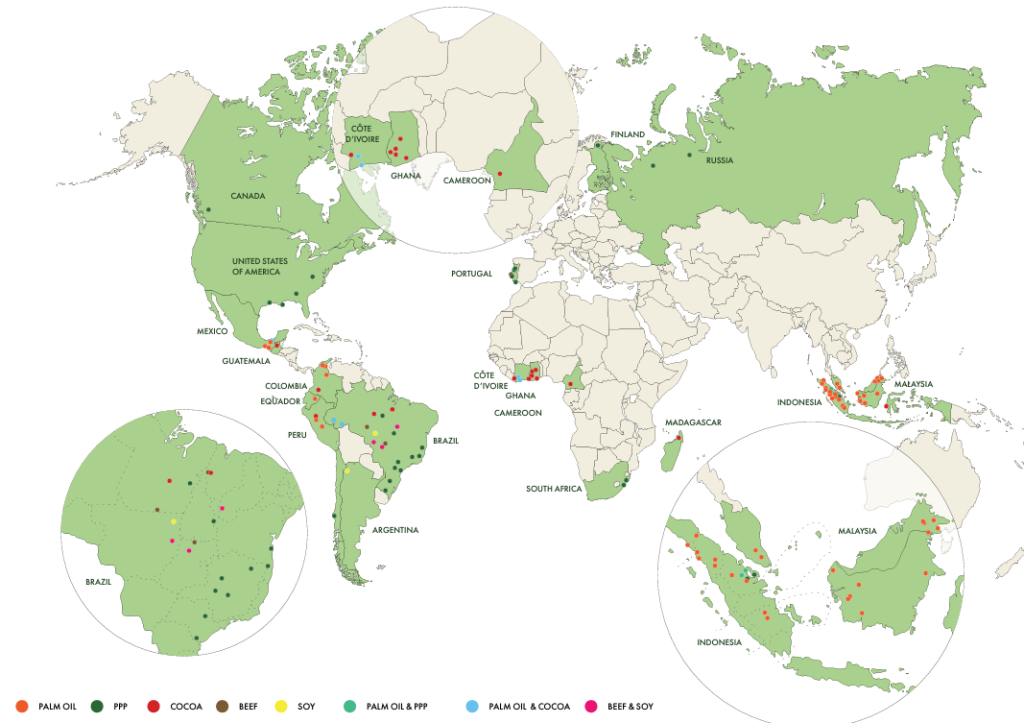
The Business Case
It is clear that companies see value in collaborating with stakeholders in production landscapes to address systemic challenges and create change at scale – hundreds of companies are doing this already.
However, the business case for downstream and midstream companies to take action in places that are mostly outside their operational areas needs to be strengthened if more support is to be mobilized from these supply chain actors.
Figure 3 presents the business case for companies to take landscape-scale action. See the final report for an elaboration of this business case and read the commodity reports for specific examples of landscape-scale action supported by companies.
Figure 3 The Business Case for Companies to Take Landscape-Scale Action
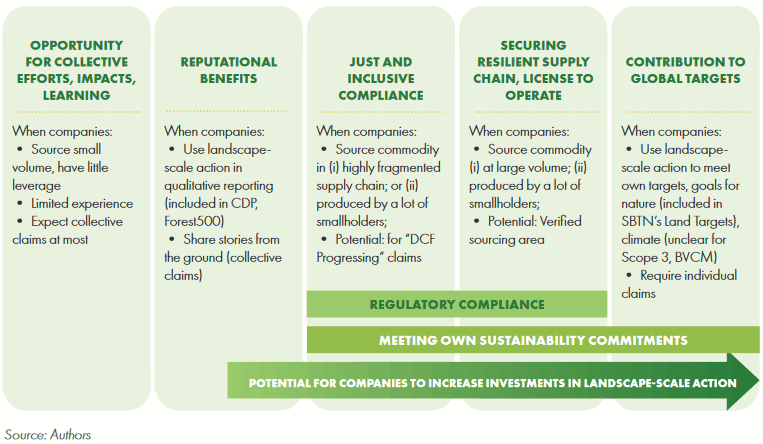
Our Recommendations
Drawn from research and findings across all the papers, the study presents recommendations for companies and the wider community to mobilize more private sector action and multi-stakeholder collaboration at scale in production landscapes.
| Recommendations for downstream and midstream companies | Recommendations for the wider community |
| 1. Increase landscape-scale action and integrate it into corporate sustainability and business strategy | 1. Actively incentivize companies to invest in land-use transformation at scale in sourcing regions |
| 2. Invite and/or incentivize other private sector actors to take landscape-scale action | 2. Create mechanisms, tools and other resources to guide and enable various types of companies to take landscape-scale action |
| 3. Spotlight multi-stakeholders collaboration to transition towards sustainable land use at scale | 3. Build and upscale the capacity of local facilitators and implementers |
| 4. Align resources and efforts in committed and/or progressing landscapes and jurisdictions | |
The Global Study
This research project is a 15-month study initiated by TFA to improve understanding of how company collaboration with stakeholders in production regions is a key strategy to ensure supply of sustainable commodities and to create positive impacts on the ground.
Findings and recommendations from this study are expected to help map the way forward to mobilize more landscape-scale action by companies to accelerate progress at landscape and jurisdictional scale.
TFA collaborated with Proforest and CDP to dive into why and how downstream and midstream companies, often without direct operations in production regions, have taken landscape-scale action to address systemic sustainability challenges in cocoa, palm oil, pulp and paper, beef and soy landscapes (soy report forthcoming).
A report was developed for each commodity to answer these questions, showcase landscape and jurisdictional initiatives and examples of action supported by companies and provide recommendations on the pathway forward. TFA and Proforest also collaborated to investigate how landscape-scale action can contribute to companies meeting their climate, nature and people goals.
A final report complements findings from these previous briefs with explanations of how collaboration with stakeholders in production landscapes can help companies support or comply with government policies. It also proposes ways to scale up action and progress towards sustainable land use at scale.
This study, part of TFA’s support for the Jurisdictional Action Network, was developed with generous support from Cargill and the governments of Norway, the UK and the Netherlands.
